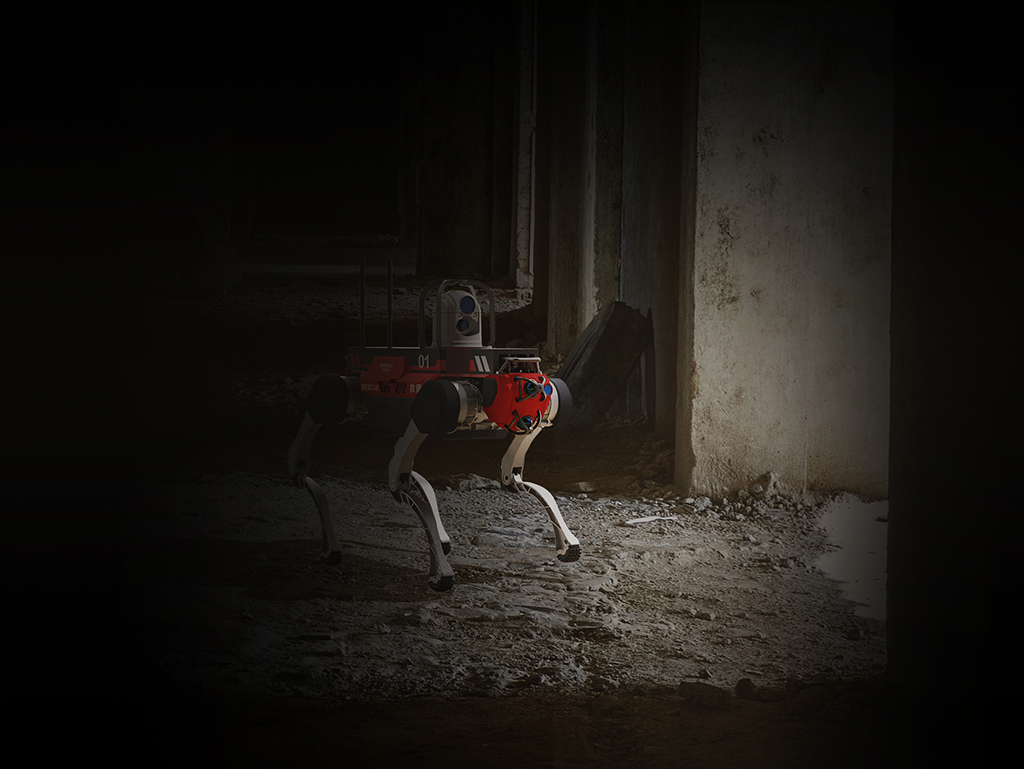By Ni Tao
In recent years, as the application of robotics has evolved in fire prevention and rescue, robot dogs are increasingly stepping into the spotlight. Once the domain of university researchers and tech enthusiasts, these agile fourlegged machines—officially known as quadrupedal robots—are now proving their worth in fire rescue and emergency scenarios.
Designed for robust maneuverability, robot dogs can traverse uneven and unstructured terrain with ease, allowing them to navigate earthquake-stricken areas, high-altitude regions, and fire-damaged zones effectively.
- FDNY Deploys Robot Dogs for Hazardous Search and Rescue
- FDNY Robot Dog Steps Out
- Fire Departments Adopt Robotic Technologies for Their Operations
- Intelligent Robots: Opportunities, Challenges, and Current Value in Fire and Rescue Operations
Thanks to their structure, robotic dogs often boast superior mobility, capable of jumping over gaps, jogging across rugged terrain, and climbing over piles of rubble. Equipped with numerous sensors and cameras, they relay real-time video footage from fire scenes, aiding decision making in fire extinguishing efforts. Reconnaissance at fire scenes, particularly risk analysis, is often the first step in firefighting and rescue operations.

Fire scenes are frequently filled with toxic gases. Robot dogs equipped with gas sensors can measure the concentration of toxic gases in the air in real time, transmitting data to command centers for early fire assessment and containment of toxic gas leaks. Moreover, firefighters can operate these robots from a safe distance, collecting and analyzing critical data and information.
In addition to detecting toxic gas concentrations, the thermal imaging sensors attached to the backs of robot dogs are designed to collect temperature data from the fire scene, aiding in planning the best evacuation routes.
DEEP Robotics, a robot company headquartered in Eastern China’s tech hub Hangzhou, produces industry-grade robot dogs. Company representatives say the firm has seen a growing role over the past few years for these machines in modern firefighting, emergency response, and rescue scenarios.
“Beyond battling fires alongside firefighters, these quadruped robots can carry equipment weighing dozens of kilograms. They are also built to replace firefighters in high-risk areas to perform tasks like detection and search for survivors,” says Qian Xiaoyu, brand manager at DEEP Robotics.

The company’s large robotic dog, X30, has participated in numerous fire rescue drills in China and beyond. Recently, it has been deployed in Singapore and South Korea, among other countries, to assist local fire departments in rescue operations.
The scope of robot dogs’ applications is not just limited to firefighting. In the aftermath of disasters like earthquakes, rescuing survivors trapped inside buildings or buried under rubble can be challenging.
Quakes often trigger power outages, leaving hallways pitch dark. In some cases, thick smoke caused by fires can impair visibility, making it difficult to locate and identify victims accurately.
This is where robot dogs shine. Equipped with a dual-light gimbal projecting beams of natural and infrared light, they can zoom in on video footage for detailed scrutiny and detect vital signs. “With lidar and proprietary fusion perception capabilities, our X30 can navigate pitch darkness or dimly lit environments, autonomously planning the best route to find survivors,” Qian explains. He adds that the company’s robot dogs could also carry oxygen cylinders.
Despite their growing use, significant challenges remain, such as operating in fire scenes, where temperatures can exceed 500°C. Currently, no robot dog in the world can withstand such extreme heat.
Qian acknowledges this limitation but notes that researchers and tech companies are working hard to develop next-generation robot dogs that can enter post-fire buildings for detection and reconnaissance immediately after a fire has been extinguished. In situations where seconds matter for saving lives, fast deployment and the ability to withstand super-hot temperatures without breaking down in action will become hallmarks of robot dogs of the future, he says.
For example, DEEP Robotics has partnered with Zhejiang University in eastern China on a firefighting robot project. Researchers set their sights on creating a robot that can enter buildings shortly after a fire for detection and reconnaissance. “We will continue to push the boundaries to explore cutting-edge applications of quadruped robots in firefighting and emergency rescue,” Qian concludes. “Our ultimate goal is to roll out legged robots to entirely replace firefighters in high-risk scenarios, reducing or even eliminating risks and hazards to them.”
NI TAO is a business analyst focusing on intelligent industrial equipment.

